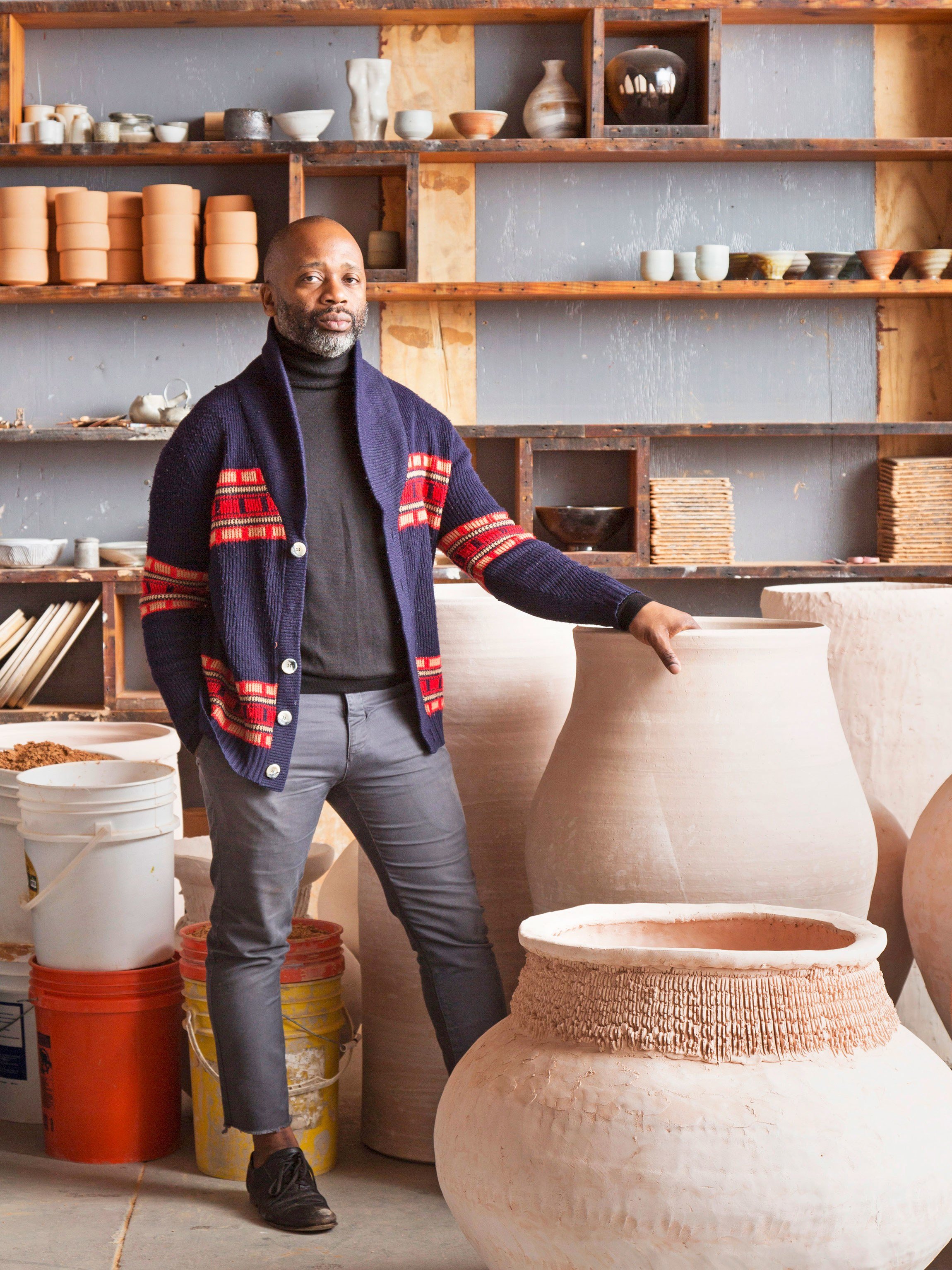
For the first time ever, a non-architect has designed the Serpentine Pavilion, which opened to visitors in London earlier this month.
With the help of architect David Adjaye, artist Theaster Gates, whose work cannot be simply categorized, and who has long been invested in the architecture of his native Chicago, transformed the Pavilion into a work titled Black Chapel.
Inspired by a range of architectural touchstones, including the Rothko Chapel in Texas, the work also incorporates an homage to Gates’s late father, who was a roofer.
In an exclusive interview filmed as part of Art21’s series Art in the Twenty-First Century back in 2016, the artist describes his early interest in pottery and how that led him to embrace new forms of art-making.
Serpentine Pavilion 2022 designed by Theaster Gates © Theaster Gates Studio. Photo: Iwan Baan. Courtesy: Serpentine.
With a degree in urban planning and a background in religious studies, Gates was always drawn to the physicality of the world around him. He was initially drawn to ceramics, he said in the interview, “because it’s the thing that no one thinks about… it’s always under your feet.”
With a view that “the world is ripe for a remaking,” clay provides a truly blank slate.
Ceramics was not a financially viable option for the artist, however, and he began incorporating found objects into his work, appealing to the sense of memory history in each thing.
Gates credits his upbringing in the church for allowing him “to imagine that the world was not a series of abandoned buildings but, in fact, just a world waiting to be restored.”
Watch the video, which originally appeared as part of Art21’s series Art in the Twenty-First Century, below. The Serpentine Pavilion is open to visitors through October 16, 2022.
This is an installment of “Art on Video,” a collaboration between Artnet News and Art21 that brings you clips of news-making artists. A new season of the nonprofit Art21’s flagship series Art in the Twenty-First Century is available now on PBS. Catch all episodes of other series, like New York Close Up and Extended Play, and learn about the organization’s educational programs at Art21.org.